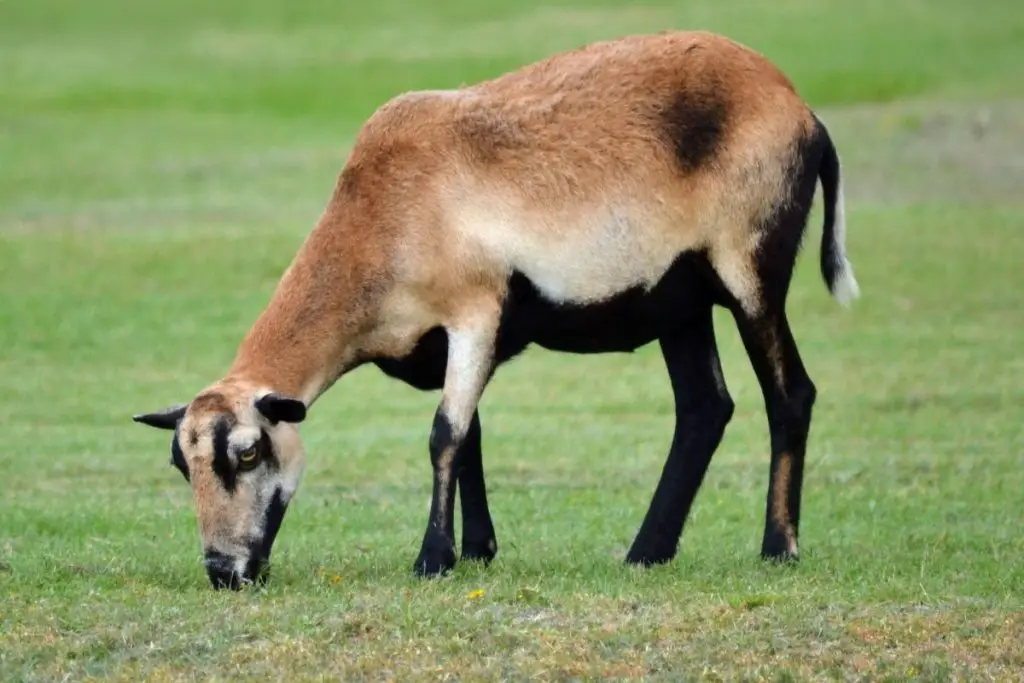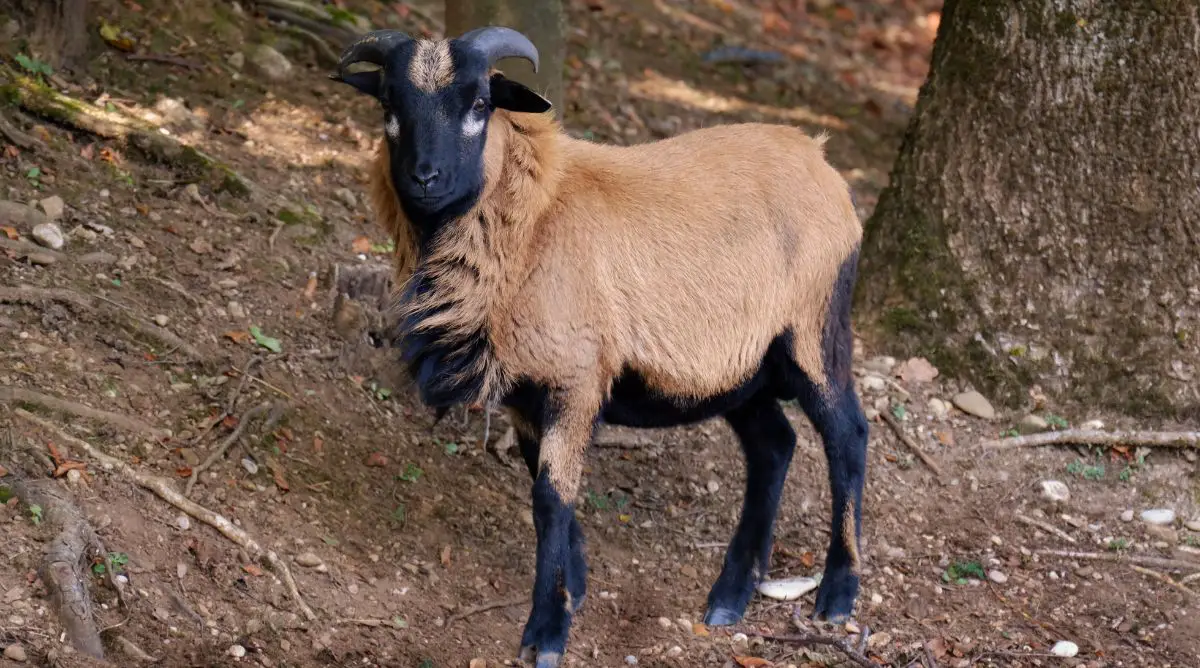The American Blackbelly sheep are an offshoot of the Barbados Blackbelly sheep. As a hair breed with natural disease resistance, they are easy to manage. With their impressive horns and striking tan and black markings, they are valued for trophy hunting as well as their meat.
Table of Contents
American Blackbelly Sheep Breed Origin
The American Blackbelly is a hair sheep that originated in the United States. It descended from the Barbados Blackbelly which comes from the Caribbean island of Barbados.
In the 1970s, Dr Lemmuel Goode of North Carolina State University brought a few Barbados Blackbelly sheep from Barbados. A group of private breeders established a cooperative to save the remaining bloodlines, resulting in the American Blackbelly.
The Barbados Blackbelly Sheep Association International (BBSAI) gave the American Blackbelly its official name in 2004.
American Blackbelly Breed Characteristics

| Characteristics | Description |
| Origin | United States |
| Appearance | A magnificent-looking sheep with a tan coat and a black face, legs, ears, and underbelly. Back and sides can range in color from dark brown to crimson to tan. The rams have impressive horns. Ewes may be polled or may have horns. |
| Wool | Hair sheep (no wool) |
| Meat | Sweet meat |
| Environment | They thrive in hot, humid environments, but are also adaptable to colder climates. |
| Common uses | Meat, trophy hunting |
| Fertility | Fertile year-round, with gestation at five months. 2-3 lambs per season. Easy lambers. Tend not to have difficult birthing issues. |
The American Blackbelly is a magnificent-looking sheep with a tan coat and a black face, legs, ears, and underbelly. The sheep’s back and sides can range in color from dark brown to crimson to tan. The rams have impressive horns, while ewes may be polled or may have horns.
American Blackbelly sheep are a hair sheep breed with a small build and a strong flocking instinct.
They thrive in hot, humid environments, but are also adaptable to colder climates.
American Blackbelly Fertility
American Blackbelly ewes are fertile year-round, with gestation at five months. They normally produce two to three lambs each season. No more than two lambs per ewe are advised in order to provide a sufficient supply of milk.
American Blackbelly ewes are easy lambers, and tend not to have difficult birthing issues.
Management of American Blackbelly Sheep
With no shearing, docking, vaccinations, or deworming necessary, American Blackbelly are some of the easiest sheep to manage.
- Parasite and disease resistance: Because they are disease and parasite-resistant, American Blackbelly sheep tend not to need much medical attention.
- No deworming or vaccinations: Many American Blackbelly owners don’t use deworming or vaccinations, relying instead on the breed’s natural resistance.
- No shearing: As a short-hair breed, no shearing is necessary.
- No docking: According to the American Blackbelly Sheep standards, the tail should not be docked.
- Versatile eaters: American Blackbelly sheep eat a varied diet and can survive foraging in relatively infertile areas, as well as in pasture.
American Blackbelly Sheep Facts
- The American Blackbelly is an excellent breed for profitability since they are easy to manage and disease-resistant.
- They are lucrative for the ethnic meat market, especially in areas with a sizable immigrant population.
- American Blackbelly sheep are ideal for the grass-fed beef market, serving organic foods.
- Since the American Blackbelly doesn’t have wool, there is lower lanolin in their skin. This makes their meat sweeter.
- With the rams’ impressive rack of horns, there is also a market for trophy hunting these animals.

